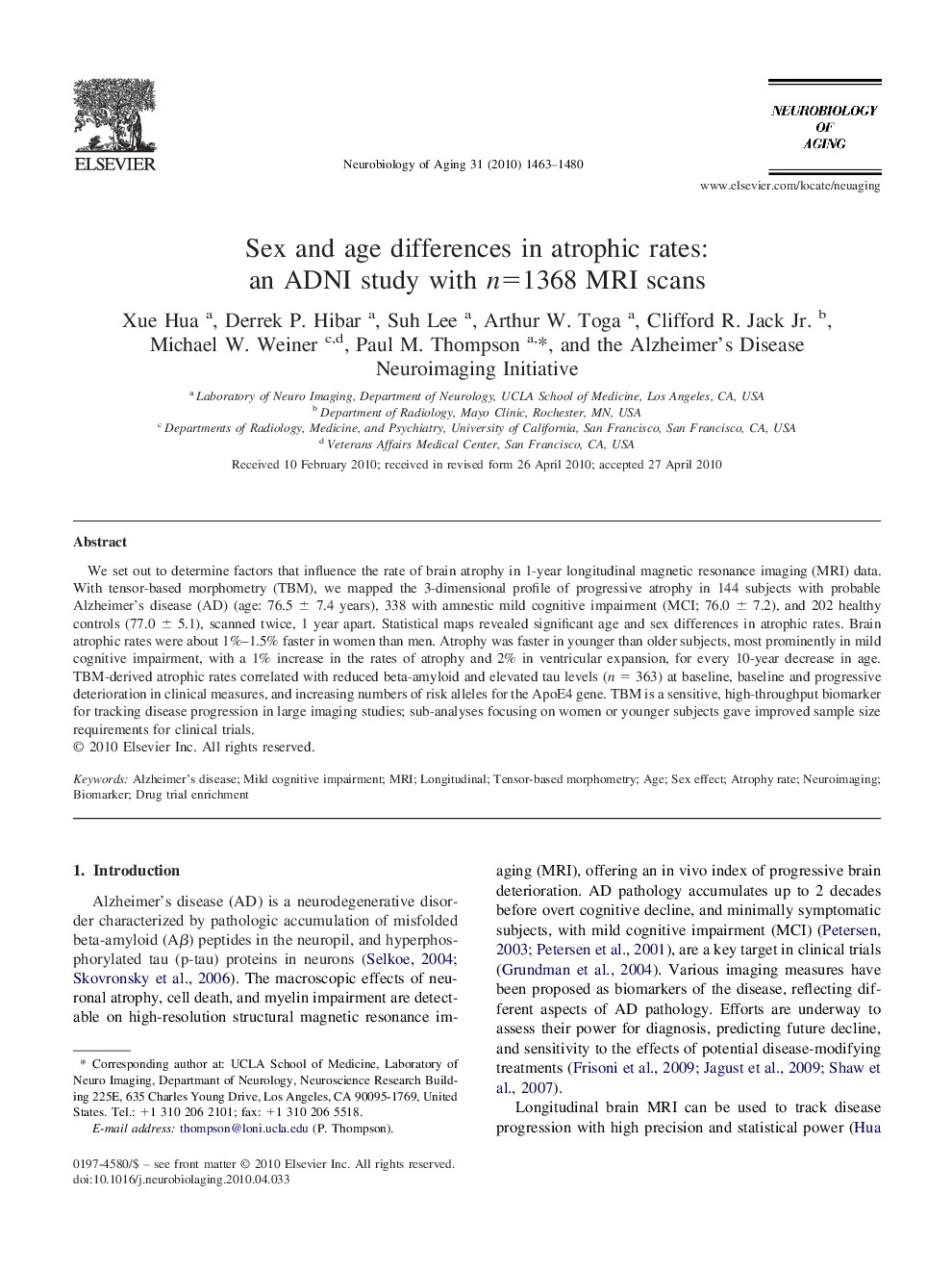| Article ID | Journal | Published Year | Pages | File Type |
|---|---|---|---|---|
| 331056 | Neurobiology of Aging | 2010 | 18 Pages |
We set out to determine factors that influence the rate of brain atrophy in 1-year longitudinal magnetic resonance imaging (MRI) data. With tensor-based morphometry (TBM), we mapped the 3-dimensional profile of progressive atrophy in 144 subjects with probable Alzheimer's disease (AD) (age: 76.5 ± 7.4 years), 338 with amnestic mild cognitive impairment (MCI; 76.0 ± 7.2), and 202 healthy controls (77.0 ± 5.1), scanned twice, 1 year apart. Statistical maps revealed significant age and sex differences in atrophic rates. Brain atrophic rates were about 1%–1.5% faster in women than men. Atrophy was faster in younger than older subjects, most prominently in mild cognitive impairment, with a 1% increase in the rates of atrophy and 2% in ventricular expansion, for every 10-year decrease in age. TBM-derived atrophic rates correlated with reduced beta-amyloid and elevated tau levels (n = 363) at baseline, baseline and progressive deterioration in clinical measures, and increasing numbers of risk alleles for the ApoE4 gene. TBM is a sensitive, high-throughput biomarker for tracking disease progression in large imaging studies; sub-analyses focusing on women or younger subjects gave improved sample size requirements for clinical trials.
